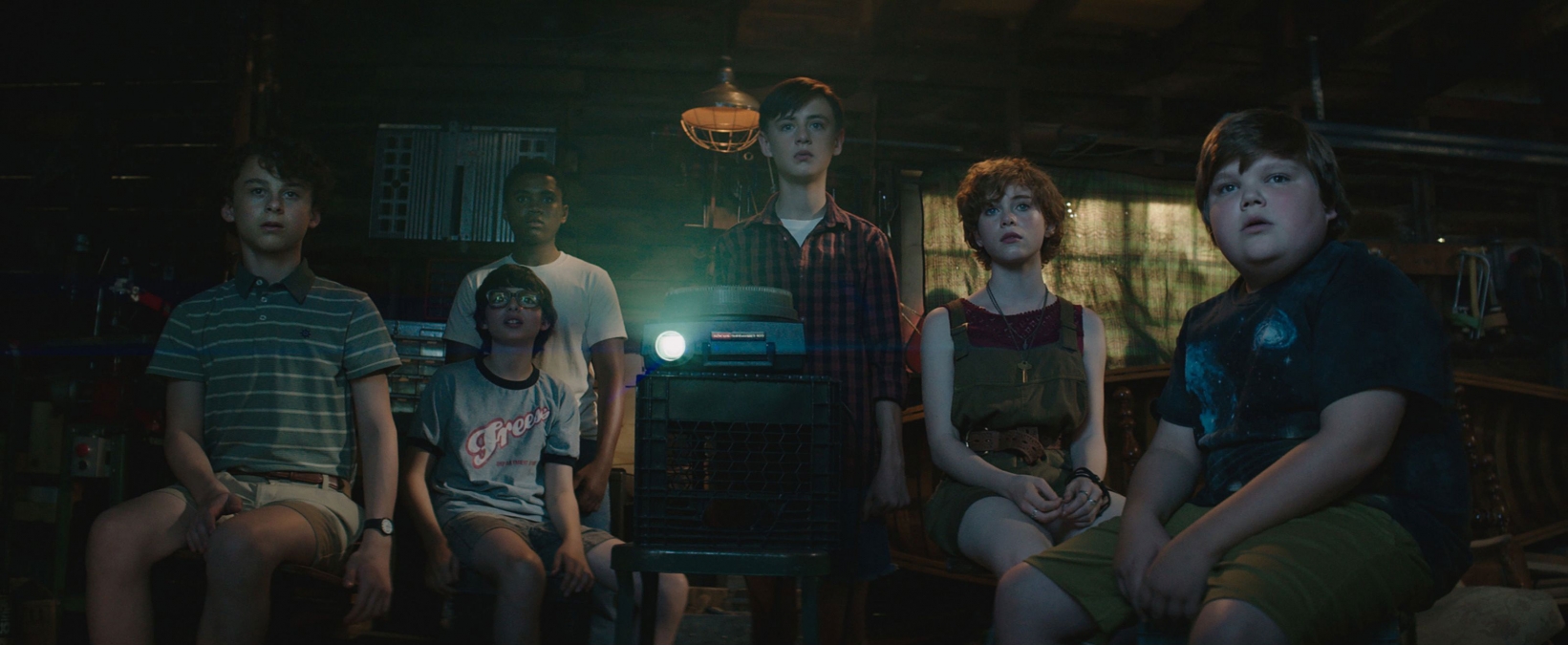IT has broken every record in the book, except maybe something related to professional curling, or to sequels (which it — It — will remedy next year, where I have it on good information that the entire second half of Stephen King’s adapted magnum opus will involve the grown-up children of Derry, ME becoming curling champions battling Pennywise, The Metaphysical Curling Clown in its final moments, and maybe securing their victory with the help of also the Curling Turtle Who Curls).

And it’s not hard to see why, even if the enormity of IT‘s initial box office is unexpected. Stephen King’s mammoth novel is a perennial favorite, the performances from a child ensemble are uniformly impressive, and it wisely updates King’s 1950s suburban terror with some 1980s in-jokes and nostalgic atmospherics. IT‘s smart right down the line in its choices, frequently honing in on the anxieties of adolescence with wit and some terrific jump-scares, while still managing to be something of a grown-up meditation on loss. That’s a lot of heavy lifting for a movie that is also about a dancing, child-murdering clown.
So why did I find IT a bit toothless, as it were? Competent, visually astute, well-acted and scripted, and a nice mainstream rebuttal, as Brandon Ledet points out, to what some horror fans have started referring to derisively as “A24 horror,” those moody affairs that occasionally seem to forget, or seem to look down on, the conventional trappings of the very genre they’re working in.
Nearly 20 years ago, I watched The Blair Witch Project in a theater. As with IT, it was a cheap day, a $5 dollar sort of affair, because I was cheap as fuck even before streaming came along, and at a kind of notoriously shouty venue. (IT at Jack London, here in Oakland; Blair Witch 2,812 miles away at another Regal Cinema, at Union Station in D.C.)
In D.C., the early laughs at Blair Witch‘s conceit — those anxious horror exhalations masquerading as tough-guy posturing we all can see through immediately — were promptly stifled by fellow moviegoers, and not politely: “Shut the fuck up!” was the refrain, from an army of young folks who waited with baited breath for the next shot. I’d never been to a quieter movie.

IT also played to a quiet, packed theater. But for much of it, I felt an anxious quality that had nothing to do with what shot might come next. With the exception of a horrifying death at the film’s start, IT never really ropes you in, scare-wise. Actually, rather like some of the A24 films it’s supposedly an antidote for, IT also trusts that the mood will guide you, settling in for background creeps and subtextual anxieties. (Though there are also definitely a few moments that will lead to some popcorn being spilled.)
But for the most part, the narrative is uneasy and unsure, having stripped away so much from the novel (and only being a first installment of a quite long book, for that matter.) The 80s reference points, substituted for the 50s homogeny King obviously loathed so much, seem fun. We laugh at NKOTB, and write a piece on Medium about Stranger Things, or the Carpenter-esque scores Adam Wingard and Simon Barrett dig. The metaphors clunk along. It seems like a film afraid to hold its audience in thrall, that to do so would be dangerous, or weird, or maybe unprofitable. It’s an R-rated horror, the most successful of all time, that can’t quite float, and I don’t think I was the only one who left the theater with the word ‘tame’ bouncing around my head.

Still, even if IT is not the masterpiece I want it to be, it succeeds just fine on its own terms. This owes as much to the finely-sketched characters of the novel — in several instances, sketched much more broadly on screen (poor Mike!), but still very believable in their relations to each other and the small, increasingly frightening world in which they live.
Sophia Lillis (emanating charisma, even if she’s ultimately a bit betrayed by the third act) and Finn Wolfhard (from the before-mentioned Stranger Things, wiseacreing his way the whole thing, like the funniest friend you weren’t lucky enough to have as a kid) are the stand-outs of a very good crew of Losers. Bill Skarsgård‘s Pennywise is appropriately off-putting, with every line delivered in a weirdly shifting cadence, punctuated by insidious smiles or expressions much more overtly horrific.

The overarching thing IT gets right is what it feels like to be caught between childhood and adulthood, where your lack of agency combined with your growing knowledge of dangers that seem elemental leave you even more vulnerable. The horrors at play here include a murderous clown, sure, but they also register in the bullying, the hinted evils waiting in certain homes, the dis-ease and complacency of an adult world that barely seems to notice you exist. That you’re on your own, except, hopefully, for a friend or five.
If that makes IT sound like a quieter, more reflective film than its stills would indicate (or its masterful trailer, advertising a film they manifestly did not make), it should. The lessons in this narrative have much more to do with grounded horrors than killer klowns. Knowing that going in might lead to a better appreciation of what the filmmakers (and King) hoped to accomplish, what ended up working, and what was jettisoned into the sewers.
In any case, I can’t imagine the filmmakers are worrying too much about these quibbles. IT is a bona-fide phenomenon, and deserves praise on many levels. It’s sweet, charming, funny, and, like Pennywise, it gets kids. It’s even kind of scary sometimes, if that’s your thing!

